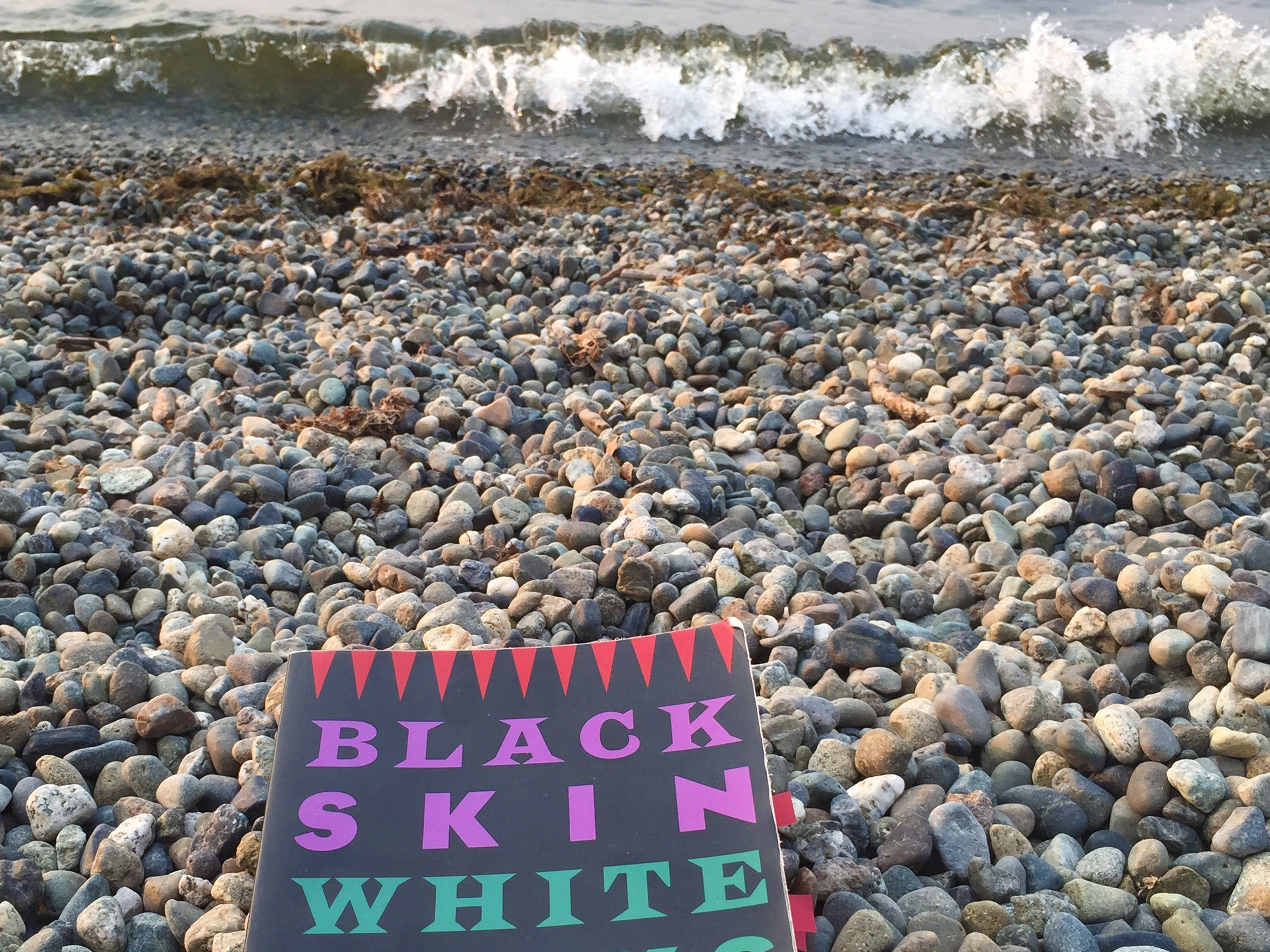Frantz Fanon (1925–1961) was a Martinique-born psychiatrist, writer, and revolutionary. Like other middle-class Martinicans, he received a French education. He fled the island at age 18 and enlisted in the Free French Forces, continuing his service to the end of the second world war in France. After a short time back in Martinique, he returned to France to study medicine and psychiatry. He practiced in both of these fields before moving to Algiers, where he became involved in revolutionary activities and the nationalist and anti-colonialist Fellagha movement. Black Skin, White Masks was written in France, prior to Fanon’s appointment to a psychiatric hospital in Algeria. The bulk of his writings, including his call to action, The Wretched of the Earth, were written during his time in Algeria.
I first read Black Skin, White Masks as a graduate student in Jerusalem. I was enrolled in a seminar titled “Politics and Poetics of the Body in Art” and this book appeared in a long list of recommended reading for the course. Being as I was in Israel, at that time a 50-some-year-old nation-state born out of idealism—in Theodor Herzl’s words, a home for a people without a home—I was well-versed in post-Zionist discourse and the moral conflict that most Jewish Israelis in the liberal camp experience in light of our complicit participation in the oppression and displacement of the Palestinian people. In Jerusalem, these arguments ripple off the land and vibrate in the air and wrap themselves around the letters on the pages of books and newspapers and blogs—whoever you are, your existence is a political detail to be exploited by some demagogue or other. I read Black Skin in an environment that forced me to confront my bifurcated existence on a daily basis: as oppressed and as oppressor, colonizer but not colonized. Though I had read Edward Saïd and other postcolonial thinkers, what was memorable about Fanon’s treatise was its delivery: raw and deeply personal, with a plaintive urgency and an impassioned voice that positioned it, in a way, alongside the work of poets Mahmoud Darwish or Hayim Nahman Bialik.
Now in the US, and marking one year since the fatal shooting of an unarmed, 18-year-old African-American boy by a police officer in Ferguson, Missouri, I decided to return to the book this summer. I thought it might offer a thoughtful basis for trying to comprehend the horrific events of the last year—Staten Island, Ferguson, Charleston, Houston—that have forced a nation, in blissful denial of the fallacy of “post-racialism,” to consider the construct of race and the deeply rooted biases that cause so much destruction. The Rachel Dolezal episode, in which a woman, white by birth, claims to be black, provides an absurd yet poignant counterpoint to Fanon’s experience and gave urgency to my desire to re-read his work.

In the years since I first read Fanon’s text, what has remained with me is the rawness of the author’s anger and frustration toward a reality that seems to defy the possibility of change, and, more dangerously, the hope that comes from knowing that change is possible. Though it was inspired by a specific place and circumstance, the cry that Black Skin, White Masks voices is universal and contemporary in its message and its relevance. The book is equal parts sociological analysis, testimony, and revolutionary call-to-arms—a personal narrative woven from despair, recognition, and complicity with a system that perpetuates this Sisyphean struggle for equality and legitimacy under systemic oppression.
Dressed with the writer’s facility with words, the text is composed alternately of pithy, often misanthropic outbursts (“…there are too many idiots in this world. And having said it, I have the burden of proving it”[2]); uplifting aphorisms (“What matters is not to know the world but to change it”[3]); and impassioned pleas for humanity (“Superiority? Inferiority? Why not the quite simple attempt to touch the other, feel the other, to explain the other to myself?”[4]). The most poignant moment in the book occurs when Fanon describes an exchange between a white child and his mother in Martinique. Upon seeing Fanon, the child cries “Mama, a Negro! I’m frightened!” And here is Fanon’s complaint: the skin color that traps the humanity that lies beneath—a condition that those enjoying the privileges that white skin affords will never endure—places the black Other in a class, impermeable to and bound by colonial assumptions.
The book offers Fanon’s perspectives—heavily influenced by Marxist thought and humanism as well as the writings of Sartre and Lacan—on a wide array of issues. In a mere 232 pages he is able to provide something for every reader: liberation, sexuality, queer theory, black homosexuality and gender politic, miscegenation, minority experience, and more. Black Skin, White Masks echoes revolutionary calls to action; yet its opening statement with which I opened my essay promises that revolution will come, though perhaps not in our time. It closes with Fanon’s “final prayer,” an entreaty expressing his vision for society’s only escape from the anti-humanist crimes engendered by racism: “O my body, make of me always a man who questions!”[5]




